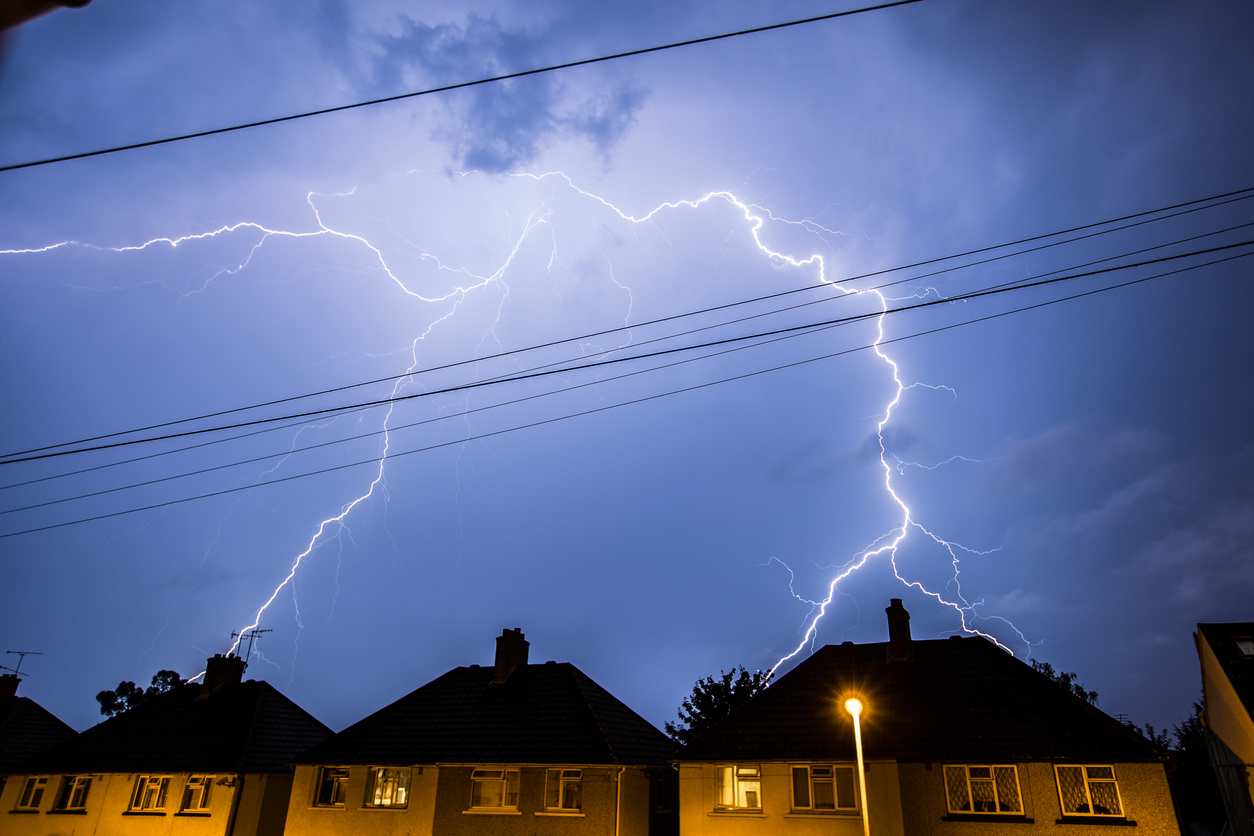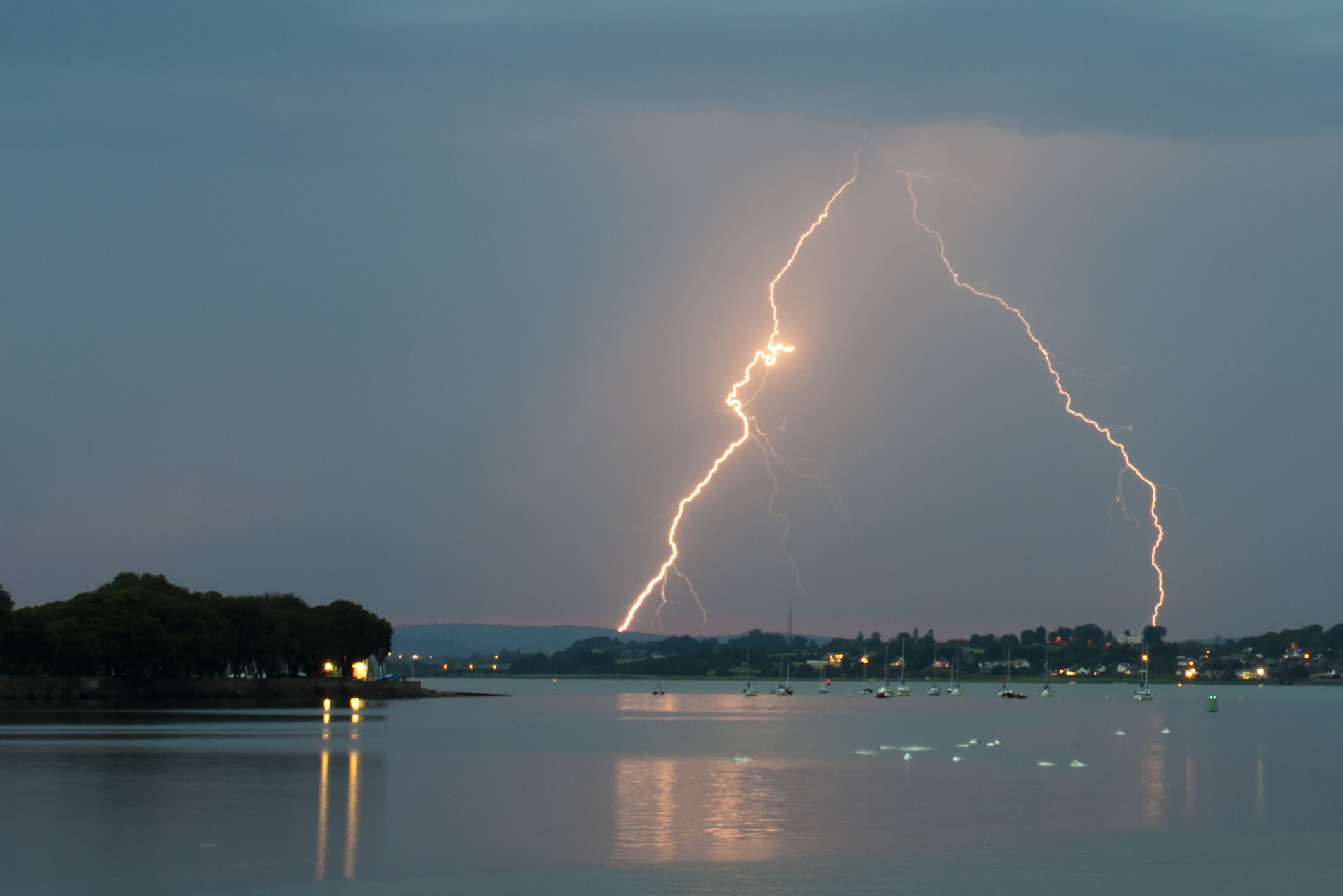An electrifying guide to lightning
Lightning is a spectacular natural phenomenon, but it can have an adverse effect on all things electrical.
Lightning is one of the most spectacular sights in nature. As well as being present in thunderstorms, it can appear in hurricanes, during volcanic eruptions and even in some heavy snowstorms. Its volatility and unpredictable nature make it a hazardous phenomenon to people, buildings and of course – electrical equipment.
Some brief facts about lightning
Lightning is a surprisingly recurring phenomenon. Astonishingly, there are close to 1.5 billion (1,400,000,000) strikes around the world every year, which is about 44 strikes every second. The UK, Ireland and the surrounding seas, experience nearly half a million lightning strikes each year, making it incredibly common.
The energy generated from a bolt of lightning causes the air to briefly become hotter than the surface of the sun – around 28,000°C! The sudden rise in temperature causes the air to explode outwards, which causes the booming thunder we hear. Lightning strikes often occur within a cloud or between clouds but can also frequently travel downwards at a speed of 200,000 mph hitting the ground, buildings, or trees.
Why does lightning cause so much damage?
An average bolt of lightning contains around 4,000 megawatts (MW) and lasts for a quarter of a second. This means that thousands of volts appear and disappear almost instantly, causing significant damage to structures and electrical equipment.
Lightning is attracted to taller structures, making overhead power lines and the poles, towers and pylons that support them an easy target. These lines distribute or transmit high voltage electricity over long distances through the overhead network. If an overhead power line is struck directly by lightning, it can lead to the melting of the conductor, switchgear, terminations, and even transformer failure. This can then lead to power cuts.
A lightning strike can also cause power surges or transient overvoltages into the overhead power lines. Although these overvoltages do not last for very long, they can lead to insulation breakdown and damage connected devices. Overvoltages can also trip protective devices, which can lead to a disruption of power supply.
If lightning strikes a house directly, then the resulting power surge is likely to melt cables and cause a fire.
So, what causes lightning to form?

It all starts in the clouds where Intense updrafts of air cause water particles carried in it to freeze. Some of these particles become icy and form into hail, which then becomes too heavy to be carried in the updraft so they fall. As they do, they bump into smaller particles. Electrons are then transferred from the smaller particles to the larger ones – giving it a negative charge. The particles that no longer have electrons gain a positive charge.
This exchange creates an electrical charge separation – with the positively charged particles gathering at the top of the cloud and the negatively charged ones gathering at the bottom. The ground, or objects on the ground such as buildings, tend to be positively charged. Opposites attract and when the strength of the electrical charge overcomes the insulating effects of the atmosphere then lightning happens. Notice that lighting bolts come from the cloud to the ground, but also from the ground to the cloud as the positive and negative charges balance each other out.
Are there any regulations relating to lightning strikes?
Given the frequency of lightning strikes and the damage they can cause, are there any regulations to help protect electrical systems? As it happens, there are. The Electricity At Work Regulations 1989 state that precautions should be taken to protect buildings and structures from natural hazards and extreme weather. It also lists publications which gives guidance on assessing the need for lightning protection.
There is also a set of British Standards to cover the topic. BS EN 62305 – Protection against lightning is a four-part series looking at the general principles, risk management, physical damage, and electrical systems.
Of course, the unpredictability of lightning makes it extremely difficult to prepare for. Weather Forecasters can indicate when and where there is likely to be lightning activity, but they cannot predict when or where individual strikes will happen.
Find out more about Prysmian cables.



